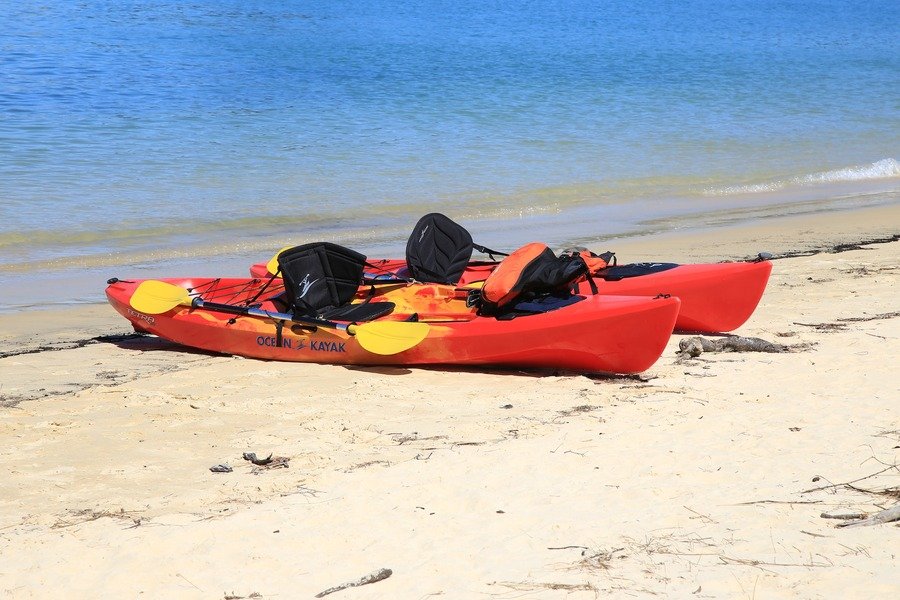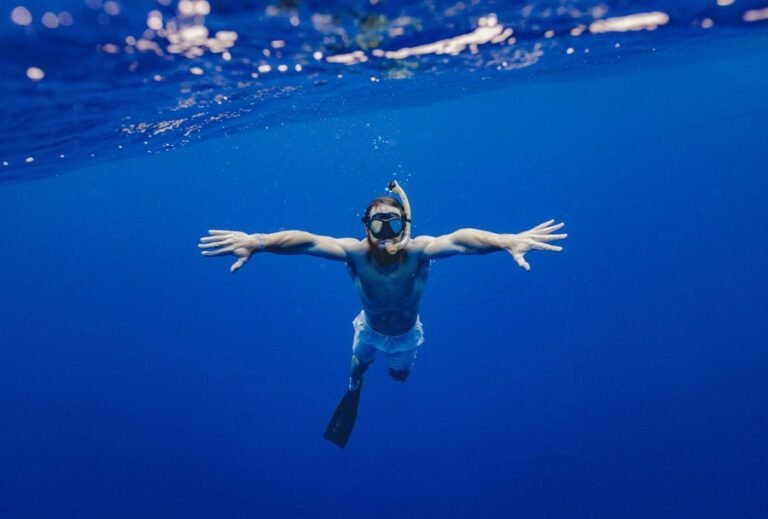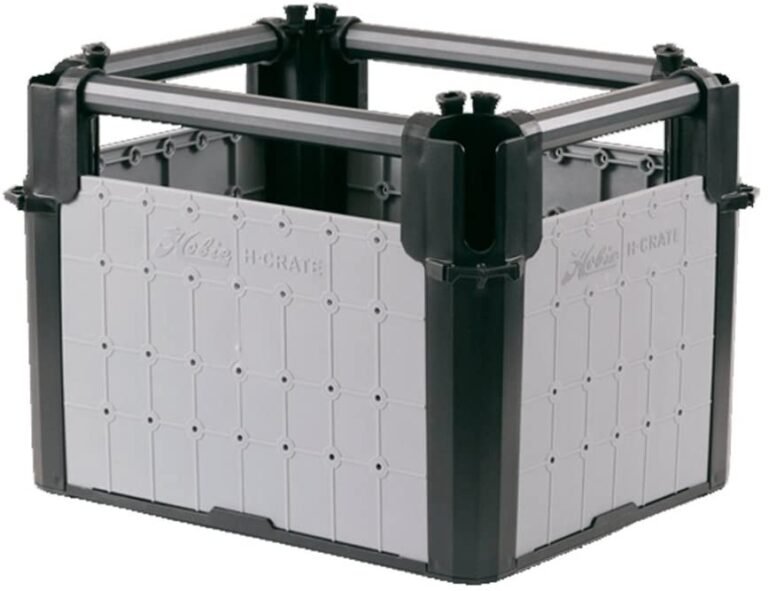How To Clean A Kayak

Kayaking is a popular sport enjoyed by people of all ages. Kayaks are popular watercraft propelled by the use of paddles and are used for fishing and recreational paddling.
Many have kayaks of their own, so they can hit the water at a moment’s notice without the hassle of borrowing or hiring one. While owning your kayak is fun, it comes with extra responsibility.
The kayak has to be maintained if you want it to last and you want to continue enjoying it. Kayaks can get dirty from use and storage and often need to be washed before use.
It is also important to make sure your kayak is clean before storing it in a clean space; many kayakers like to store their kayaks in a garage or basement, which can add extra dirt and grime to the kayaks. We explore how to clean one’s kayak in this article.
Kayak Cleaning Materials
When it comes to cleaning your kayak, there are a few things you need to keep in mind.
First and foremost, make sure you have the right tools for the job. Second, be careful with what you use; some cleaning chemicals can be harmful if spilled.
Finally, always respect the environment by using biodegradable cleaners whenever possible. Here are some recommended tools and cleaning products for kayakers:
- A Bucket: A plastic bucket is a perfect tool for any kayak owner. This is where you’ll put your cleaning supplies, and it’s a good practice to keep your bucket close by at all times during your paddling adventures. You can pick up a plastic bucket at any local hardware store, but if you’re looking for something more professional and of higher quality, I recommend buying an Inflatable Kayak Paddleboard Bucket.
- Freshwater: You dilute soap solutions with water to use in washing the kayak and you use water to rinse the kayak when you are done. Water helps ensure your kayak is cleaner than if you simply used a towel to clean the watercraft.
- Cleaning Supplies: These are the materials with which you will clean your kayak.
- Solvent (Dawn dishwashing liquid works great, but it can be very strong and may damage your kayak if you’re not careful.) You can also use detergents or kayak cleaners (specially designed for cleaning kayaks.)
- Sponge (The best sponge for cleaning kayaks is a microfiber one. They can be found at most stores that sell BBQ grills and outdoor gear.)
- Spray bottle (I like the spray bottles with a fine spray nozzle, but they’re not necessary. If you don’t have one, you can use a paper towel roll or spare plastic bottle. You can put soap solution into it and lightly spray parts of the kayak before using a sponge or brush to wash them.
- Brush: You can use them to scrub death from parts of the watercraft.
- Towel: This could be a small cloth you set aside for cleaning the kayak. You can use it in rinsing the kayak, cleaning the seats, and so much more. Using a towel will help your kayak dry quickly so you can store it.
Why Should You Clean Your Kayak?
Cleaning your kayak is an important part of keeping it in good condition. Not only will it look nicer, but it will also be easier to use and will last longer. Here are five reasons you should clean your kayak regularly:
- It makes your kayak look nicer. Kayaks can oxidize and turn a dull color over time, which can make them look dirty and old. Cleaning them regularly will help to keep them looking their best.
- It will make it easier to keep your kayak in good condition. If you clean your kayak regularly, you will be able to see any signs of wear and tear immediately. Seeing these problems can help you decide what needs to be done to fix them before they become problematic. If you take care of your kayak, it will last longer.
- It can make your kayaking experience more enjoyable. A clean kayak will feel smoother and less bumpy.
- It can keep you safer. If a kayak gets dirty, it can become more slippery. You could easily fall out of your kayak if you are not careful.
- Above all, a clean kayak is good for hygiene. Making sure your kayak is clean is important since you will be spending a lot of time in it. Dirty environments are a good way to get sick, defeating the fun purpose for which you love kayaking. A clean kayak will also keep your mind at ease.
Cleaning Your Kayak
Kayaking is a great way to get outdoors and enjoy nature, but your vessel can be dirty and smelly after a day on the water. Here are five tips to help keep your kayak clean and smelling good:
- Rinse it off with fresh water after each use.
- Cleaning it with a mild detergent and warm water.
- Wash the deck and hull with a hose if necessary.
- Drying it off with a towel.
- Storing it in a cool and clean dry place.
These tips should help you get started. We look at how to clean the different parts of a kayak in the rest of the article.
Cleaning The Kayak Hull
If you’re like most kayakers, you probably enjoy taking your kayak out for a leisurely paddle in the river or ocean. However, if you’re anything like me, you know that it’s important to keep your kayak clean and free of algae and other contamination.
Kayaks are often stored outdoors, where rain and salt water can damage the kayak’s hull. Kayaks are susceptible to the same types of water damage as any other vessel. There are a few things you can do to keep your kayak clean and free of algae buildup.
Use a soft brush and mild soap to clean the hull. Avoid using harsh cleaners or abrasives, which could damage the kayak’s finish. If your kayak has been exposed to salt water, dry it off thoroughly before cleaning.
If you find the use of brush and soap labor-intensive, you can get a hull cleaner specifically designed for kayaks to make the job easier.
Cleaning The Seat and Straps
The kayak is an important piece of equipment that you will use to explore your surroundings. The kayak must be kept clean so that you can enjoy your trip. Knowing how to clean the seat and straps of the kayak is essential as you’ll be sitting on those very seats.
Wipe down the kayak seats with a damp cloth. Keep them free of dirt, sand, and water. If necessary, use a cleaner such as soap and water. If you have to, use a vacuum cleaner to remove any stubborn debris.
Wipe the kayak seats down with a clean cloth. Cleaning the kayak floor is also important. Use a mild soap solution to wash the kayak. Make sure the surface is clean and dry before you store the kayak in a cool dry place.
Cleaning The Cockpit
Cleaning the cockpit can be a tedious and time-consuming task, but with a little patience and effort, it can be done quickly and easily.
You want to make sure the cockpit is clean before using or storing it to prevent deterioration. Here are some tips for cleaning the cockpit:
- Start by cleaning out any debris that has been collected on the surfaces of the cockpit.
- Use a soft brush and soapy water to get rid of any dirt, dust, or gunk. Pay attention to the areas where your hands and feet go, as this is where most dirt tends to accumulate.
- If there is dirt or dried sweat on surfaces, use a cloth to clean it off.
- Do not use paper towels as they can scratch your paint.
- Never use cleaners containing ammonia, bleach, or other chemicals as these are toxic and could damage the interior of your watercraft.
Cleaning The Body Of The Kayak
If you’re like most kayakers, you’re probably familiar with the “icky” feeling of a dirty kayak. That’s why it’s important to keep your kayak clean, both inside and out. Here are some tips for cleaning the body of your kayak:
- Use a soft cloth and warm, soapy water. Be sure to remove any build-up of algae or barnacles. Use a very mild soap such as dishwashing liquid. The idea is to not get the kayak too wet, but rather to remove dirt and grime.
- Dry the kayak off completely before storing it.
- Check the drain plug on your kayak to make sure it is still working properly. If it is not, you may need to change it out or have a professional do that for you.
- Use neutral detergent to clean the deck of your kayak.
Cleaning The Rudder and Skeg
Kayaks are often used in freshwater, but they can be taken on saltwater adventures as well. The rudder and skeg can get filthy with sand and salt, and even fish scales can build up over time.
Cleaning the rudder and skeg of a kayak is important if you’re going to take it on a voyage. The rudder helps you steer and the skeg helps you keep your kayak tracking straight.
To clean the rudder, first, detach it from the kayak. Then use a brush to scrub off any dirt. Make sure to get inside the stem and around the edges.
Next, rinse everything with hot water to remove any residue. If the skeg is dirty, use a toothbrush and some warm soapy water to clean it. Once you’re finished cleaning your kayak, give it a good buff with a dry cloth before you store it away.
Bottom Of The Kayak
Kayaks are great for exploring the outdoors, but they can also be dirty and smelly. The bottom of your kayak can easily become covered in dirt and algae, making it difficult to enjoy your outing.
Cleaning the bottom of your kayak is important to keep it looking and smelling great. Here are a few tips on how to clean the bottom of your kayak:
- Make sure you have all the necessary supplies before you start cleaning. You will need a flat-head screwdriver, a scrub brush, rags, and some dish soap.
- Remove the drain plug and fill your kayak with hot water.
- Scrub the bottom of your kayak with a scrub brush while the water heats up.
- Add a generous amount of dish soap and scrub the bottom again.
- Rinse the kayak thoroughly and dry it with a towel or air dry it if possible. Allow the kayak to dry in a shady area.
- Apply some conditioner to the bottom of your kayak, and allow it to air dry.
- To prevent algae growth, occasionally rinse your kayak with fresh water after each use.
- After cleaning and drying your kayak, store it in a cool dry place.
Cleaning Your Kayak Gear
Cleaning your kayak gear can be an important task, that with a little bit of planning and effort can be done quickly and easily.
Next to your kayak, these are the tools that ensure you have a great time on the water. It goes without saying then that they should be well maintained so they can last and give you more fun times.
Cleaning your gear is also good hygiene and can help rid your kayaking environment of unwanted odors. Below are some tips for cleaning your kayak gear.
- Use a wet cloth and mild soap to clean any dirt or debris off of the gear. This will help to remove any dirt, dust, or salt residue that may have accumulated on the gear throughout your kayaking journey.
- Next, be sure to dry the items thoroughly before storing them. A towel can be used o speed the process before air drying it. Once your gear is in pristine condition, it is ready for storage.
- Store your kayak gear in a cool and dry place to maintain its integrity. Don’t leave it lying carelessly on the floor, especially in a place where it would pick up dirt.
- Always remember to properly clean your equipment after each use to ensure optimal performance. It is also good practice to clean your gear before use.
Storage Areas
Kayaks are an amazing way to explore the waters around you, but they can be ruined if they get wet when not in use.
If you’re storing your kayak in a dry place, make sure the storage area is clean and free of debris. If the storage area is wet, you may need to let it dry out before storing your kayak.
If the storage area is not clean or dry, your kayak may become damaged. The storage area should also have a cool temperature.
Why Store Kayaks In A Cool And Dry Place?
Kayaking is a great way to take in the natural beauty of your surroundings. However, if you’re not careful, water can quickly become your enemy.
Here are five reasons why storing your kayak in a cool clean dry place is so important.
- Kayaks are susceptible to damage from moisture, mildew, and mold if they’re not stored properly.
- Dirty kayaks can cause corrosion on metal pieces, which can decrease the value of your kayak and ultimately lead to failure. They can also be very expensive to repair.
- Kayaks should be stored away from the sun as ultraviolet rays can damage the kayak’s body.
- If your kayak is not stored in a clean, dry place, it can become contaminated with bacteria and fungi. This can lead to fungal infections such as athlete’s foot or worse.
- Storing your kayak in a clean dry place is one of the best ways to protect it from the elements and keep it in good condition. It is a sure ticket for durability.
Kayaks are a lot of fun and provide a great way to get exercise, but they need to be properly cleaned and cared for regularly in order to last.
Regular cleaning helps kayaks maintain their quality and performance. The process of cleaning a kayak is not difficult, but it does require some time and effort.
Clean every part of the kayak properly and with care then use a towel to dry it before storing it till next time. Proper storage is also essential if you want the kayak to last. Keep these tips in mind when storing your kayak.
- Make sure that the kayak is completely dry before putting it away.
- Be sure to use a kayak storage rack or straps to secure the kayak in place.
- Find a safe place to store the kayak where it will not be damaged by the elements.
By following these simple steps, you can ensure that your kayak will be safe and ready for use when you are ready to hit the water again while it lasts for years to come. By following the steps outlined in this article, you can clean your kayak quickly and easily.






